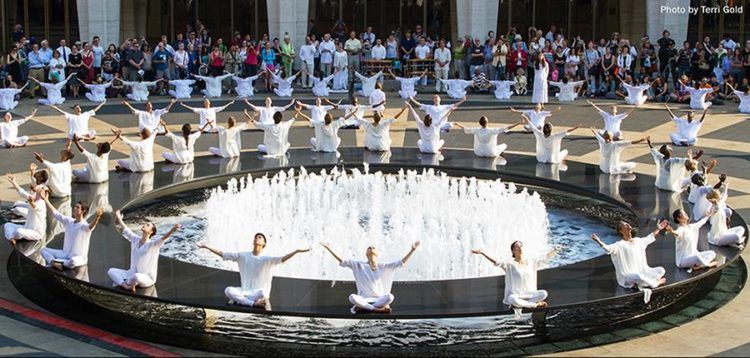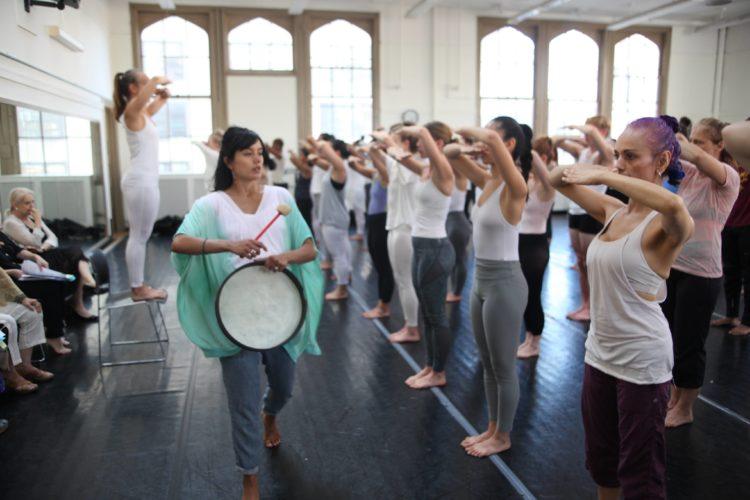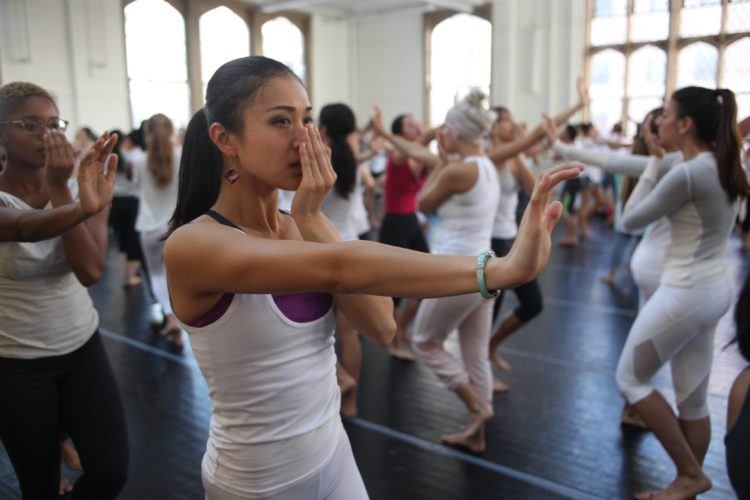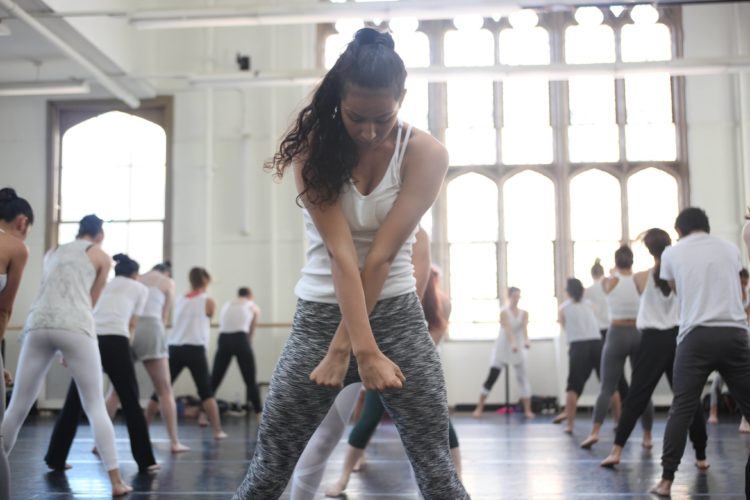Dancers Inspire Healing By Presenting ‘Table Of Silence’ For Sept. 11
Everyone takes a moment to honor and remember Sept. 11, 2001 in their own way. For dancers and dance lovers, the “9/11 Table of Silence Project” translates all that difficult emotion into movement.
“Table of Silence,” a free and outdoor public-art event, was created in 2011 by choreographer Jacqulyn Buglisi, who danced for Martha Graham and created more than 100 dances for her own company Buglisi Dance Theatre.
Buglisi begins “Table of Silence” at 8:15 a.m. and concludes at 8:46 a.m., the moment when American Airlines Flight 11 struck the North Tower. To emphasize the importance of art, the work takes place on the wide plaza of Lincoln Center For the Performing Arts; It will also be broadcast on Facebook Live, as well as via Buglisi Dance Theatre’s website.
More than 150 professional and pre-professional dancers join the work from all backgrounds, ages and companies, including the Alvin Ailey American Dance Theatre and Martha Graham Center for Contemporary Dance.
“This is America,” Buglisi said of her diverse ensemble made of unique individuals. “We are immigrants. We are people of color. We represent many religions.”
They come for the opportunity connect the emotive power of dance to public life. But ahead of each performance are many rehearsals where the magic has to be made.
“Each step is sacred!” yelled Buglisi to her dancers learning the steps in a Hunter College studio.
As artistic director of Buglisi Dance Theatre, a company she co-founded with fellow Martha Graham dancers, she seemed to channel Graham, the modern dance pioneer who believed in the expressive power of the human body.
The rehearsal was only the second rehearsal for the annual performance, and it included 90 dancers who passed her in a meditative march set to the beat of a drum. They practiced the ballet’s signature walk, a rhythmic procession meant to raise consciousness.
The 30-minute piece includes 12 repeated gestures, but for now, Buglisi focused her intense brown eyes on the feet of her dancers.
“Inner thigh muscles!” she called, pointing to a young man’s slightly turned-out toes that should be parallel. “It’s the hovering of the foot over the earth.”
She kicked off her sandals to show that each step drives into “magma below the surface.”
With the same clear instructions, one of her assistants taught the differences between “Helen’s Bell,” the second gesture, and “Sewing,” the eleventh.
“I came up with my own imagery for each gesture,” said Kitty Lunn, 67, who has performed “Table of Silence” every year since 2011.
To her, “Helen’s Bell” represented a ringing of an alarm while “Sewing” resembled the sprinkling of ashes onto cloth. A paraplegic since 1987 when she fell down a flight of stairs, Lunn used her right hand to maneuver her wheelchair. Yet her concentration on “communal prayer” made it seem as if she were dancing with her whole body.
On registration forms, dancers completed short essays to explain what inspired them to volunteer for the project.
In one essay, Isabella Pagano, 15, said she was born just one month after the terrorist attacks. She auditioned for “Table of Silence” because she wanted to feel connected to the buildings that meant so much to her family. Her great uncle was Minoru Yamasaki, architect of the original World Trade Center, whose fear of heights inspired the Towers’ narrow windows.
Ariana Acosta, 20, wrote that she was only four years old in 2001. That morning, her father went to work as usual. As an accountant at Marsh & McLennan, he worked in an office that was in the direct path of Flight 11.
“He must have had an angel on his shoulder,” explained Acosta, who was taking a bath with her sister when the planes hit the Towers. “Dad never eats breakfast, but that day he grabbed a bagel and missed the train.”
This story first appeared September 2017 on Dance.com.





